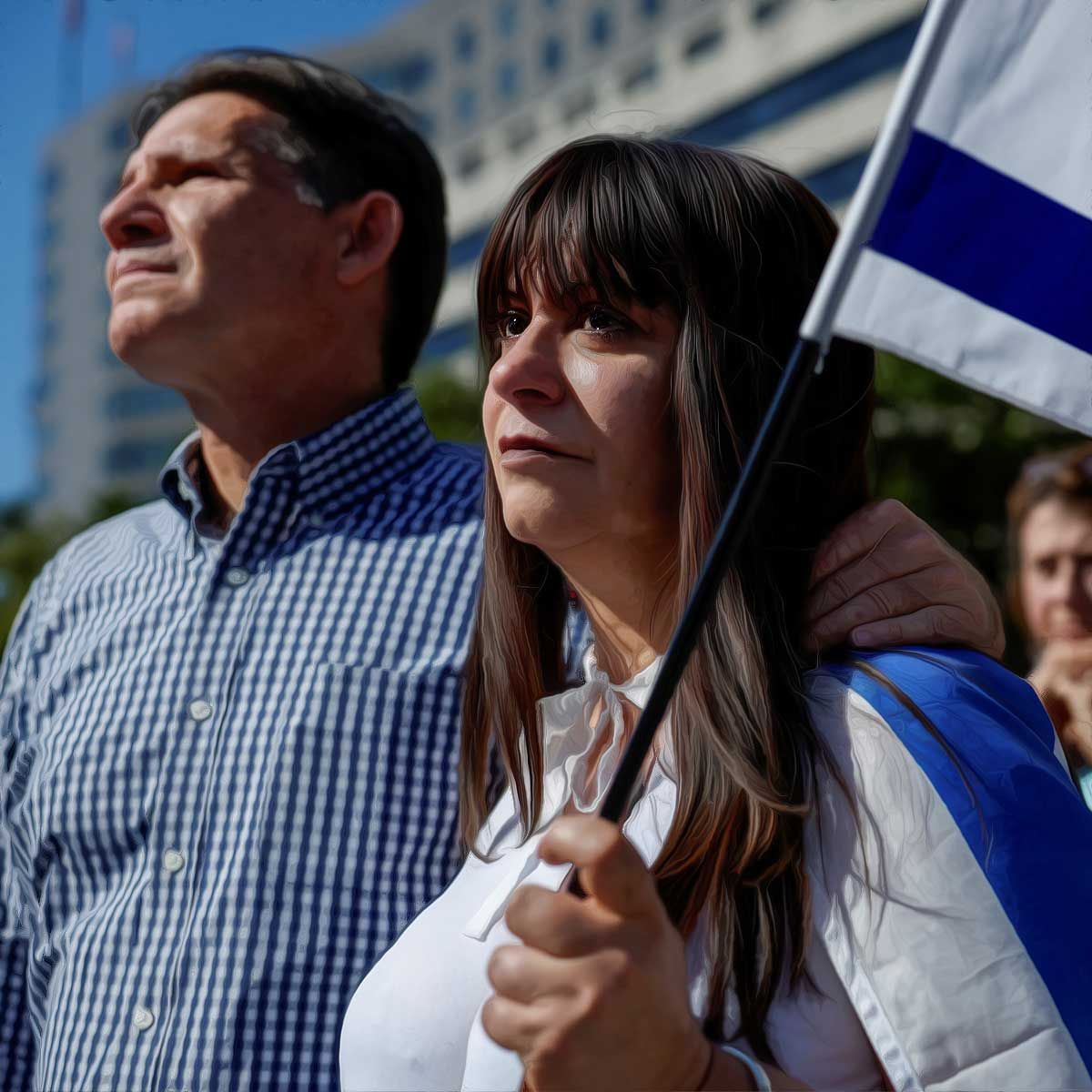MORE COVERAGE
Twitter Coverage
Satyaagrah
Written on
Satyaagrah
Written on
Satyaagrah
Written on
Satyaagrah
Written on
Satyaagrah
Written on
JOIN SATYAAGRAH SOCIAL MEDIA
"Foul Zenith": In a chilling strategy, Hamas holds Gaza captive, using residents as shields, as the conflict rages, 50000 pregnant women put forth for emotional leverage; meanwhile leaked plans unveil Hamas's intent to maximize innocent Israeli casualties

The fabric of war is woven with tales of heroism, strategy, and sometimes, tragic desperation. But what happens when desperation morphs into calculated malevolence? In the Israel-Hamas conflict, a deeply disturbing strategy of Hamas has come to light: an intentional focus on targeting Israel's most vulnerable – its children, women, and civilians.
|
From the revelations laid bare in confidential documents to the tragic aftermath on the ground, it's evident that Hamas sought to strike where it would hurt Israel the most - its heart and soul. The intent to infiltrate schools and youth centers, as indicated in the documents, is no random act of violence. It's a premeditated decision to inflict pain and terror on a future generation, to leave a lasting scar that goes beyond physical destruction.
But the sinister strategies don’t end at Israel’s borders. Within Gaza, Hamas has seemingly taken its own people hostage, preventing them from seeking safety. Pregnant women, arguably the most vulnerable demographic, find themselves trapped in a dire situation, exacerbating the humanitarian crisis. Instead of ensuring the safety of its citizens, Hamas appears to be using them as shields, strategically placing them in harm's way to further their narrative and objectives.
This alarming tactic serves a dual purpose. On the one hand, it tries to tarnish Israel's international image, projecting it as an aggressor against innocent civilians. On the other hand, it's a shield for Hamas, a protective layer they hope will deter retaliatory strikes.
The psychological warfare embedded in this strategy is palpable. For the people of Israel, the fear isn't just about the rockets raining down; it's the knowledge that their adversary is intentionally seeking out their children, their future. And for the Palestinians in Gaza, it's the harrowing realization that their protectors might be their captors, willingly placing them in the line of fire for a broader agenda.
The testimonies emerging from the ground, be it from anguished Israeli parents or desperate Gaza residents, all point towards a calculated strategy by Hamas, one that prioritizes its objectives over the sanctity of human life. It's a chilling reminder that in the intricate game of war, sometimes the pawns are the innocent, and their suffering is used as a currency for political gains.
In a chilling display of inhumanity, Hamas seems to be employing a dangerous and reprehensible tactic: using the most vulnerable, including pregnant women, as human shields to safeguard themselves. This cruel strategy exposes thousands to unimaginable risks, particularly the 50,000 expectant mothers in Gaza, many of whom are on the verge of giving birth. The harrowing tales emerging from maternity wards bear testament to this grim reality. These women, already grappling with the anxieties of impending motherhood, are now subjected to the added horror of an uncertain fate in a conflict zone. It's a stark reminder that for some, the preservation of their own interests overshadows the value of innocent lives. Such deliberate endangerment of the defenseless is a grievous violation of human rights and paints a grim picture of the lengths to which some entities will go to further their own agendas.
|
Hamas Prevents Palestinian Evacuation: A Ploy Amidst the Chaos?
In a shocking revelation, the Israel Defence Forces (IDF) announced on Sunday that while a humanitarian corridor was established to allow civilians to evacuate the war-ravaged Gaza Strip towards Egypt, Hamas militants were actively hindering Palestinians from making this potentially life-saving move.
As the perilous hours close in, with Palestinians in Gaza city keen to safeguard themselves from an impending massive attack by Israel, their exit routes are allegedly being blocked by Hamas. This revelation comes shortly after Israel issued a stern warning to the residents of Gaza to evacuate and seek refuge in Egypt. In the backdrop, the Israeli government was making strategic moves to secure political endorsement for its impending large-scale offensive on Palestine.
An unsettling account emerged from Jabalya in Gaza. A resident detailed how Hamas operatives confiscated personal belongings and car keys from those seeking shelter. This account was part of a telephonic conversation released by the IDF between an Israeli Intelligence Officer and a Gaza resident.
The devastating conflict between Israel and Hamas in the Gaza Strip continues to escalate. Current reports estimate that the conflict has claimed approximately 2,329 lives and resulted in injuries to over 9,000 individuals. According to the Times of Israel, as of Saturday, an agreement has been reached allowing foreigners to evacuate from the war-torn region. However, the fate of the local Palestinian populace remains uncertain and overshadowed by the alleged actions of Hamas.
|
In the midst of the ongoing conflict, a glimmer of hope emerges for foreigners residing in the Gaza Strip. As per a recent agreement involving Egypt, Israel, and the United States, these individuals have been granted safe passage through the Rafah border crossing into Egypt. A significant part of this accord is the commitment by Israeli forces not to target the areas these foreigners would traverse while exiting the Hamas-dominated territory.
This consensus, as reported by The Times of Israel, was realized after diplomatic efforts led by Qatar. Furthermore, the agreement received the nod from Palestinian factions, notably the Hamas and Islamic Jihad.
An Egyptian official, as cited in a report by ANI referencing The Times of Israel, confirmed that instructions to reopen the Rafah crossing point from the Egyptian side were received and subsequently implemented on Saturday afternoon. This move signifies a cooperative effort to ensure the safety of foreign nationals amidst a landscape of escalating tensions.
Amidst the ongoing warfare, a pressing concern emerges - the safety and security of the countless civilians caught in the crossfire. Thousands, in a bid to escape the relentless bombardment, are seeking refuge in more peaceful regions of the country, away from the direct line of fire from Israel.
|
The Israel Defence Forces (IDF), recognizing the critical situation, has communicated to the residents of Gaza about the establishment of an evacuation corridor. This pathway, designed for Palestinians and foreign nationals alike, is to aid their safe exit from northern Gaza. The IDF has unequivocally stated, "The IDF will not carry out any operations along this route," emphasizing their commitment to civilian safety during these evacuations.
Further amplifying the sense of urgency, the military has strongly recommended that inhabitants shift to the southern parts of the Strip, anticipating a likely ground operation in the near future.
It's worth noting the IDF's pointed remark on the Hamas leadership: "Be assured, Hamas leaders have already ensured their safety and that of their families," highlighting a perceived disparity between the leadership and the general populace in these harrowing times.
|
|
50,000 pregnant women in Gaza facing nightmare: UNFPA
The ongoing conflict has not only threatened the lives of those directly involved but has also put the most vulnerable - expectant mothers - in a perilous situation. As per the latest updates from the United Nations Population Fund (UNFPA), a staggering 50,000 pregnant women in Gaza are living a "nightmare". With the healthcare infrastructure teetering on the edge of collapse, these women face daunting challenges in the weeks and days leading up to their deliveries.
Dominic Allen, the UNFPA representative for the state of Palestine, in his conversation with CNN, shed light on the gravity of the situation. Out of these 50,000 expectant mothers, approximately 5,000 are due to give birth in the imminent month. Alarmingly, a fraction of these births might experience complications.
Allen paints a harrowing picture, "Imagine the anxiety of navigating the final stages of pregnancy, especially the crucial last trimester, in such dire circumstances. These women are devoid of basic essentials - clothing, hygiene support, and more critically, a sense of security. The unpredictability of the situation - not knowing what the next hour or even the next minute might bring - adds layers of stress and fear, not just for their own safety but for the wellbeing of their unborn child."
|
The tales emerging from the hospitals in Gaza are nothing short of heart-wrenching. Dominic Allen, the UNFPA representative for the state of Palestine, emphasized the dire circumstances during his conversation with CNN.
Relaying the firsthand account of a midwife from a maternity hospital in Gaza, Allen revealed the grim reality that many medical professionals face amidst the ongoing conflict. Some midwives, crucial to ensuring safe childbirth, have been rendered incapacitated, unable to reach the maternity wards due to the perilous conditions outside. Their inability to provide vital assistance during such critical times has been a tragic consequence of the current unrest.
Allen's voice carried a sense of urgency as he asserted, "Humanitarian aid and supplies to Gaza are of paramount importance. We must establish a humanitarian corridor immediately. It's imperative that humanitarian law is respected and upheld. These pregnant women, in dire need, must be given access to the lifesaving health services they so desperately require."
|
Hamas's Disturbing Strategy: Deliberately Targeting the Innocent
In a shocking revelation, top-secret plans from Hamas have surfaced, indicating their malevolent intentions of deliberately targeting children. These terrorists had a sinister goal in mind: to maximize casualties, especially among the young Israelis.
NBC News disclosed these harrowing documents on Saturday, shedding light on the planned attacks on educational institutions and youth centers in the peaceful kibbutz of Kfar Sa’ad. Specific directives were chillingly clear: "Combat unit 1" was assigned to surround and secure the new Da’at school, whereas "Combat unit 2" was given explicit orders to not only take hostages but also to scour the Bnei Akiva youth center and the old Da’at school. A separate page, meticulously organized with colored tables, chillingly directed another unit to "kill as many as possible" and "capture hostages" in the eastern sector of Kfar Sa’ad.
Such nefarious strategies underscore the extent of the threat faced by innocent civilians, especially children, in the ongoing conflict. The world needs to be vigilant against such malevolent intents that endanger the lives of innocent young souls.
Kfar Sa’ad wasn’t the sole target on Hamas's grim list. Several other kibbutzim, including Kfar Aza, Nahal Oz, and Alumim, were also under threat, with Hamas swiftly overwhelming them post their incursion. Detailed satellite maps, now in the possession of NBC, clearly demarcate these and other vulnerable locations, further reinforcing the Israeli government's claims of Hamas's intentions to purposefully target civilian areas.
However, what's even more unsettling is the apparent depth of intelligence that Hamas seemed to possess regarding the Israeli defense. Leaks to American media outlets indicate an alarming awareness of specific border units and an intricate understanding of the Israeli military's modus operandi. Furthermore, documents unearthed by Israeli emergency responders, as reported by The New York Times, highlight the meticulous organization within the attacking force. These terrorists were not just organized but had specific objectives and well-devised strategies, pointing to a deeply calculated and premeditated assault on innocent civilians.
Not only did the attackers have specific targets, but their strategies were also intricately planned down to the minute detail. The kibbutz was at the center of their onslaught, with a clearly defined approach, as they intended to launch the offensive from designated angles. A planning document, timestamped October 2022, even went as far as to outline the estimated number of Israeli troops stationed at proximate posts. It calculated the time these troops would require to respond and reach the targeted site.
This chilling revelation emerged just a day following an unprecedented move by a senior Hamas official. In a rather unexpected gesture, he convened a press conference for the global media. This rare outreach seems to be a calculated effort by Hamas to manage and possibly curtail the mounting global indignation over the brutal acts committed by its militants on Israeli grounds. The audacity of their actions and their subsequent attempts to control the narrative only underscores the gravity of the situation.
In a rather audacious stance, Basim Naim, the figurehead for international relations within the terrorist group, vehemently asserted that their militants had a primary objective: to "avoid harming civilians." He went on to rationalize their actions, stating they were retaliatory, aimed solely at military bases and compounds. This, he claimed, was in response to Israel's alleged 17-year-long stranglehold on the residents of Gaza.
Yet, other representatives of Hamas ventured further into the realm of incredulity. They postulated that the horrifying massacre of 260 innocent revelers at an open-air rave festival the previous Saturday might have been a tragic case of misidentification, suggesting the attendees could have been misconstrued as "resting" military personnel.
In what appears to be another endeavor to mitigate the global backlash, Hamas unveiled videos earlier in the week. These footages purportedly depict their militants consoling distraught Israeli children in the kibbutzim they had seized. The juxtaposition of these claims with the reality of their meticulously planned attacks leaves the world grappling with unsettling questions.
A deeply unsettling video clip has emerged, showing a young boy, no older than a few years, perched on the lap of a militant in the backyard of a residential house. In another segment, the same child is seen hesitantly sipping from a cup, seemingly offered to him by one of the captors. It is a heart-wrenching testament to the horrors of this conflict that countless Israeli children have been reported either killed or abducted during the raid.
The scale of Hamas's audacious cross-border incursion, followed by sustained attacks on southern Israel, is staggering. The death toll has skyrocketed, with at least 1,300 Israelis losing their lives in the onslaught.
|
Gaza's Grim Reality and Israel's Outcry
On the flip side, in Gaza, the repercussions of Israeli airstrikes are equally grim. The death count from just last Saturday's airstrikes has surged to 2,215, with over 8,000 individuals nursing injuries of varying severities.
Back in Israel, emotions run high. The anguished families and friends of those taken hostage by Hamas have congregated outside the Israel Defence Force's primary base in Tel Aviv. Their collective plea is simple yet desperate: they urge the government to ensure the safe return of their loved ones, still in the clutches of the militants.
On a solemn Saturday afternoon, the streets outside the Israel Defence Forces (IDF) headquarters resonated with the combined fervor and angst of hundreds. The Israeli flags, waving high and proud, seemed to carry with them the silent pleas and prayers of the gathered crowd.
|
|
Central to this emotional gathering was Shira Albag, anguish evident in her eyes. “I want my daughter home now, I want my daughter to sleep in her bed now,” she exclaimed, holding back tears. Her 19-year-old daughter, Liri, a soldier, was taken by Hamas on October 7. Shira's pain mirrored that of countless others. “It is not only my story. Liri is one of 120 we know of. I don’t care what the government does to get them back. I’m not a politician.” When asked if she feared the hostages would be overshadowed and forgotten, her response was unwavering, “Of course. I am staying here until my daughter is back home.”
Among the crowd, Abigail Hayat, a close friend of the family of Mia Shim, a 21-year-old tattoo artist who went missing from the Supernova music festival near Re’im, had a poignant message for Hamas. “I want to say to them: you are accountable for her wellbeing. If you have her, you need to take care of her. If you want the world to think you are fighting for some kind of humanity and you are not just savages, you have to let all the girls and the children, all the hostages, go home.”
The air was thick with palpable tension outside the Israel Defence Forces (IDF) headquarters. While the anguish of the families of hostages was evident, the assembled crowd also directed their frustration and anger towards Benjamin Netanyahu and his administration. The undercurrents of blame pointed towards the government's perceived mishandling of the situation that unfolded last Saturday.
Amid the sea of faces, one chant rose above the others, echoing a sentiment that seemed to resonate with many: “Bibi to jail.” This sentiment was further emphasized by one demonstrator’s hand-painted sign, which audaciously proposed a deal to Hamas: “We give you Netanyahu, you give us the hostages.”
A critical poster added another layer to the grievances. It read, “There is 14 billion shekels for the religious. There is no money for surveillance balloons,” highlighting the perceived neglect of border security juxtaposed with the generous funding Netanyahu promised to ultra-orthodox institutions. The intent behind the message was clear - pointing out the alleged misallocation of resources, especially given the current crisis, and the political deals made to appease religious parties in the Knesset.
Tensions escalated momentarily outside the Israel Defence Forces (IDF) headquarters when police officers, equipped with a lorry laden with concrete blocks, arrived with the intent to seal off the entrance. This move was met with stiff resistance from the protestors, leading to a brief face-off. However, wisdom prevailed as police decided against setting up the barricade, opting instead to leave the area.
|
Amid the heightened emotions, when questioned about the prevalent anti-Netanyahu chants, Ms. Hayat conveyed a sense of unity and purpose. She stated, “He is accountable, but this is not the time. Our soldiers are on the border, and they need to see unity behind them.” Emphasizing the need for solidarity during the current conflict, she continued, “We will deal with that bastard of a prime minister after the war. And we will show him.” This statement underscored the collective sentiment of many Israelis - while the immediate priority is the ongoing conflict, there will be a time for reckoning and accountability.
In concluding, it's essential to differentiate between the strategies of a group and the sentiments of a people. While Hamas might employ these harrowing tactics, the Palestinian people, much like the Israelis, yearn for peace, safety, and a future free from the shadows of conflict. The international community must recognize and condemn such strategies that deliberately target the innocent and work towards a solution that prioritizes human lives above all else.
 Support Us
Support Us
Satyagraha was born from the heart of our land, with an undying aim to unveil the true essence of Bharat. It seeks to illuminate the hidden tales of our valiant freedom fighters and the rich chronicles that haven't yet sung their complete melody in the mainstream.
While platforms like NDTV and 'The Wire' effortlessly garner funds under the banner of safeguarding democracy, we at Satyagraha walk a different path. Our strength and resonance come from you. In this journey to weave a stronger Bharat, every little contribution amplifies our voice. Let's come together, contribute as you can, and champion the true spirit of our nation.
 |  |  |
| ICICI Bank of Satyaagrah | Razorpay Bank of Satyaagrah | PayPal Bank of Satyaagrah - For International Payments |
If all above doesn't work, then try the LINK below:
Please share the article on other platforms
DISCLAIMER: The author is solely responsible for the views expressed in this article. The author carries the responsibility for citing and/or licensing of images utilized within the text. The website also frequently uses non-commercial images for representational purposes only in line with the article. We are not responsible for the authenticity of such images. If some images have a copyright issue, we request the person/entity to contact us at This email address is being protected from spambots. You need JavaScript enabled to view it. and we will take the necessary actions to resolve the issue.
Related Articles
- "Error in identity, universal fallout": Fahad Qubati, an Arab Israeli from Nazareth, survives a violent attack in Greece after being mistaken for Jewish, amid growing antisemitism linked to the neo-Nazi Golden Dawn party and recent Middle East violence
- "Behind every shield, a heart still beats": As the Hamas-Israel conflict intensifies, innocent Israeli babies confront horrors beyond imagination, amidst fragile diplomatic efforts, these souls are caught in a war's crossfire, bearing heart-wrenching toll
- American media house CBS downplays the horrific reality of ISIS crimes, claiming a Yazidi woman was merely ‘stranded’ in Gaza, despite being trafficked by ISIS, held captive by Hamas terrorists, forcefully married, and turned into a sex slave for 10 years
- "War unchosen, the outcome unforeseen; Israel stands firm": Iran-backed Houthis in Yemen escalate conflict by declaring war on Israel, launching missiles and drones at Eilat, prompting a robust response from the IDF with advanced interception technology
- Megha Vemuri, an Indian-American and MIT’s Class of 2025 president banned from graduation after accusing Israel of genocide in her speech, sparking Jewish walkouts, national outrage, and a deeper debate over free speech and antisemitism on U.S. campuses
- In the alarming aftermath of Oct 7th attack, Israel uncovers Hamas terrorists carrying cyanide bomb directives, as a decisive countermeasure, the nation launches 'Nili' unit, staunchly committed to tracking and neutralizing the culprits behind such terror
- ‘Time Is Running Out’: Held captive by Hamas since Oct 7, Israeli hostage Evyatar David is starved and forced to dig his own grave—proof Hamas uses civilians as pawns while Israel urges aid and fights to rescue its people from terror’s grip
- In the aftermath of the deadly Hamas-Israel conflict, Congress extends an olive branch to the Palestinians, did Rahul's political compass guide this, or was it an astral misalignment? Even the UAE, a Muslim-majority country, finds reason to condemn Hamas
- "Condemn terror, champion peace": India denounces Hamas terrorism while supporting Palestinians civilians, advocates for a balanced two-state resolution, and engages in proactive Middle East diplomacy to ensure lasting regional peace and security
- Europe stands at a crossroads as its influential nations re-evaluate Palestinian aid amidst the intense Israel-Hamas conflict, with lives hanging in the balance & the EU's diplomatic weight in play, the unfolding narrative could reshape global geopolitics
- As Europe grapples with surging anti-Semitism, countries like France and Germany clamp down on pro-Palestine protests, amidst the tumult, the Israel-Hamas conflict intensifies, casting shadows of unrest globally and challenging diplomatic ties
- "'Tomorrow we will inform you of their fate": Hamas releases unsettling propaganda video featuring hostages Noa Argamani, Yossi Sharabi, & Itai Svirsky from the Supernova rave attack, Israel military declares a critical new phase of the war, no ceasefire
- "Nefarious Design Unearthed": Israeli President Isaac Herzog claims that it was Iran who orchestrated Oct 7 Hamas attacks to derail India-Middle East-Europe Economic Corridor as it is paving the way for Israel's inclusion in the region and peace process
- "Stand With Us or Against Us": US Sec Blinken at UNSC, 'Whether in Mumbai or Israel, acts by ISIS, Hamas, or LeT are unjustifiable', Israel demands UN Chief's resignation, accusing him of justifying Hamas' attacks leading to mass murder of children, women
- "Securing Lives, Challenging Terror": Israel nears a strategic breakthrough with Hamas, negotiating the release of hostages in a move that underscores its resolve and commitment to its people amid a tense, decades-long conflict in the Middle East

























